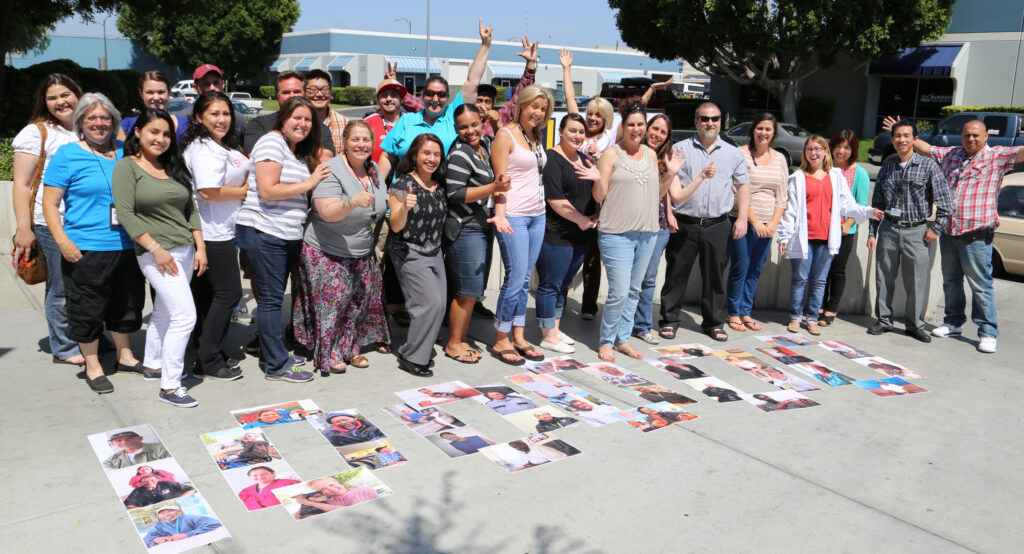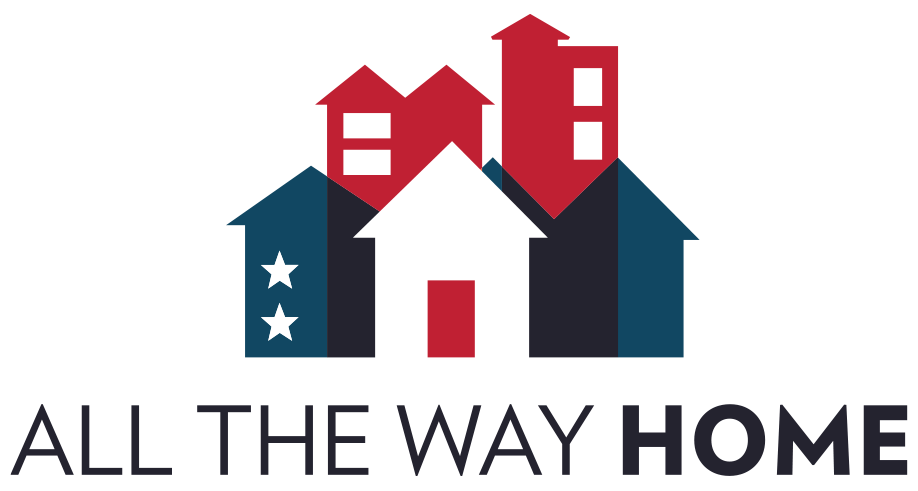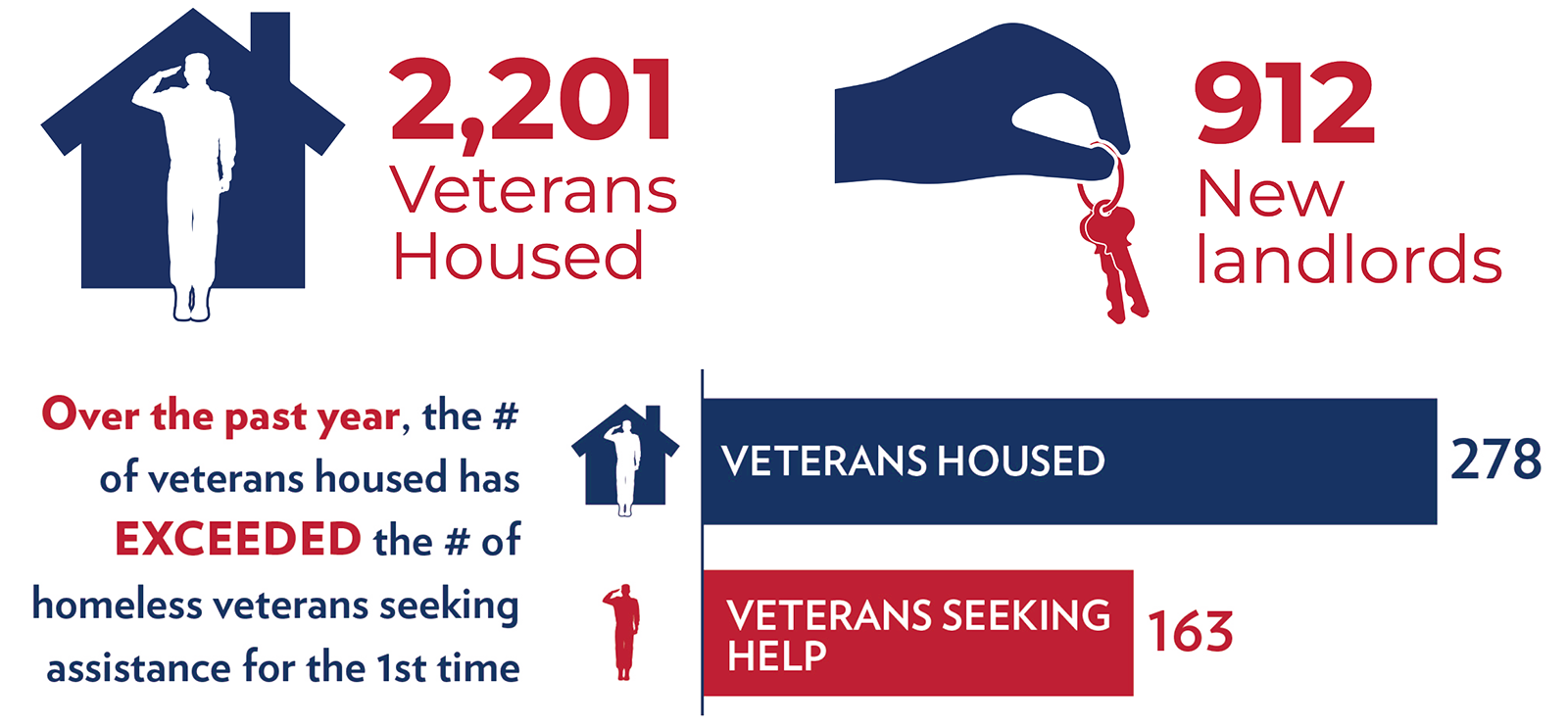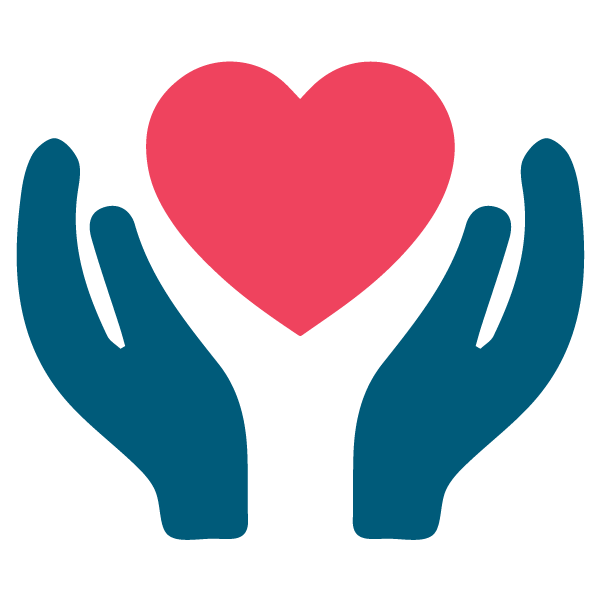(2011 – 2015)
Building the Coalition
With key partners engaged in this new collective impactA concept first introduced in the Stanford Social Innovation Review in 2011, collective impact is a framework for deep and sustained collaboration between actors from different sectors to solve a specific social problem. Successful collective impact initiatives include a common agenda, shared measurement systems, mutually reinforcing activities, continuous communication, and backbone support organizations. effort, the work to end homelessness in Silicon Valley began in earnest. During this time, the coalition conducted research, established clear objectives and metrics, and launched a few key initiatives that would lay the foundation for ongoing collaboration and future success.
Housing 1000 Campaign
One of the first initiatives the coalition undertook together was Housing 1000. Launched in 2011, the three-year campaign was inspired by the national “100,000 Homes Campaign” and set a goal to house 1,000 community members who were experiencing chronic homelessnessAccording to the U.S. Department of Housing and Urban Development (HUD), a chronically homeless individual is a homeless individual with a disability who lives either in a place not meant for human habitation, a safe haven or emergency shelter, or an institutional care facility. The individual must have been living in any of the above described places either continuously for at least 12 months or on at least four separate occasions in the last three years..
The Housing 1000 campaign embraced the Housing FirstThe Housing First approach prioritizes providing permanent housing to people experiencing homelessness, thus ending their homelessness and serving as a platform from which they can pursue personal goals and improve their quality of life. This approach is guided by the belief that people need basic necessities like food and a place to live before attending to anything less critical, such as getting a job, budgeting properly, or attending to substance use issues. The Housing First approach has been validated by numerous rigorous studies — with evidence indicating that, compared to a “treatment first” model, it leads to greater long-term housing stability. approach and brought together a variety of partners to assist these extremely in need community members. The coalition started by organizing a large volunteer force to conduct a survey of homeless encampments and create a registry of thousands of homeless individuals in need of assistance. Then, a few key partners stepped up to provide funding to connect these people to housing. The County of Santa Clara provided housing subsidies and the Santa Clara County Housing Authority agreed to allocate federal housing vouchers for the people most in need on the registry. In addition, Destination: Home funded three nonprofit organizations – LifeMoves, HomeFirst and Downtown Streets Team – to provide intensive case management, as well as a coordinating partner to both manage the referral process as well as set and track metrics that would help spur the campaign in more effective directions.
By the end of the campaign, 850 chronically homeless individuals transitioned into permanent housing and 83% remained stably housed – dispelling the misconception that chronically homeless individuals could not successfully remain in permanent housing. This validation led the Santa Clara County Continuum of Care to formally commit to a Housing First approach and provided an early sign of the potential of the emerging collective impact model.

The “Home Not Found” Cost Study
While the growing community impacts of homelessness were clear, stakeholders across the community still did not have a clear picture of the full cost of this crisis. So, Destination: Home and the County of Santa Clara partnered to analyze the public costs of homelessness.
This multiyear effort became the most comprehensive study assembled in the U.S. and culminated in the publication of “Home Not Found: The Cost of Homelessness in Silicon Valley.” Among its many key findings, the study revealed that the County of Santa Clara was spending a staggering $520 million each year responding to the needs of homeless residents without actually resolving their homelessness.
The report provided a compelling case for investing in solutions to the homelessness crisis and served as a huge catalyst for the coalition’s growing efforts in the years ahead.
The First Truly Shared Community Plan to End Homelessness
While various partners collaborated on the Housing 1000 campaign, the coalition recognized that sustained collective impact would require building a common agenda and shared systems for implementation and measurement. Accordingly, throughout 2014, the coalition convened a series of community summits, attended by dozens of stakeholders and interested community groups, with the objective of creating a unified plan.
All the nonprofits that were involved, all the governmental officials that were involved, we were sitting around a table together. We knew there was a better way than people languishing in shelters and dying, and we just had to keep pushing. The idea was if the sectors can move together, we’ll be harder to break apart.
Jennifer Loving, CEO, Destination: Home
By this point, key partners within the coalition were already seeing the initial results of efforts to get people off the streets and into homes. A core group of leaders had developed trusting relationships and a readiness to build on the successes of the model so far. With HomeBase as a facilitator, discussions revolved around how to embed robust Housing First strategies across the Continuum of Care.
The result of these consultations was the first collaboratively developed Community Plan to End Homelessness (2015-2020), a shared roadmap for government, nonprofits, and other stakeholders to make decisions about funding, programs, and priorities. The plan was structured around three central strategies:
Importantly, the plan emphasized permanent housing solutions and incorporated key objectives, measurable metrics, and a commitment to accountability. To help implement the new plan, the County of Santa Clara created a specialized department, the Office of Supportive Housing (OSH) to help coordinate the County’s efforts and manage data collection and countywide outcomes via the Homeless Management Information System (HMIS). Half of the initial funding to hire a director for OSH was provided by Destination: Home.
To generate buy-in that would be crucial at the implementation stage, the coalition also invited and secured endorsements from cities across Santa Clara County, bringing more entities into this growing collective impact model.
Endorsements
- Abode Services
- ACT for Mental Health
- Audubon Society
- Bill Wilson Center
- California Water Boards
- Office of Supervisor Dave Cortese
- California Youth Connection
- Catholic Charities of Santa Clara County
- City of Gilroy
- City of Milpitas
- City of Morgan Hill
- City of San Jose
- City of Sunnyvale
- The Commonwealth Club
- Community Solutions
- Community Technology Alliance
- Community Working Group
- The David & Lucille Packard Foundation
- Destination: Home
- Downtown Streets Team
- Family Supportive Housing, Inc.
- Gilroy Compassion Center
- Goodwill of Silicon Valley
- Office of Assemblyman Rich Gordon
- Greenbelt Alliance
- The Health Trust
- HomeAid Northern California
- HomeFirst
- Hospital Council of Northern California
- Housing Authority of the County of Santa Clara
- Housing Trust Silicon Valley
- InnVision Shelter Network
- Kaiser Permanente
- Law Foundation of Silicon Valley
- Purissima Hills Water District
- Restore Coyote Creek
- St. Joseph’s Family Center
- St. Mary Parish Gilroy
- San Jose State University
- Santa Clara Adult Education
- Santa Clara County Office of Reentry Services
- Santa Clara County Creeks Coalition
- Santa Clara Valley Medical Center
- Santa Clara Valley Water District
- Office of Supervisor Joe Simitian
- The County of Santa Clara
- Second Harvest Food Bank
- Silicon Valley Children’s Fund
- Silicon Valley Community Foundation
- Silicon Valley Community Partnership
- Sobrato Philanthropies
- South County Collaborative
- Stanford Hospital
- Sunnyvale Community Services
- Swords to Plowshares
- United Way Silicon Valley
- Valley Homeless Healthcare Program
- Veterans Administration, Palo Alto Healthcare System
- Water and Power Law Group PC
- West Valley Community Services
Overall, the new Community Plan to End Homelessness was an important milestone that represented the community uniting in its commitment to deploy proven solutions against a seemingly intractable challenge. And this new plan would serve as the foundation for the coalition’s next key phase of work.

A clear priority identified in the new Community Plan to End Homelessness was the need to serve distinct groups of homeless individuals that have distinct needs. For example, U.S. military veterans are at increased risk for homelessness, and are more likely to live on the street than in shelters, often for extended periods of time. Recognizing this, First Lady Michelle Obama launched a nationwide campaign in 2014 to mobilize mayors and local officials to end veteran homelessness.
On Veterans Day in 2015, Destination: Home, the County of Santa Clara and the City of San Jose convened a broad coalition to launch All the Way Home, a campaign to end veteran homelessness in Santa Clara County. Through this campaign, a wide array of partners came together to deploy a variety of strategies that have helped reduce veteran homelessness in Santa Clara County:
- The Santa Clara County Housing Authority helped secure and administer 400 additional federal housing vouchers to help homeless veterans pay for housing;
- The County of Santa Clara and City of San Jose allocated millions of dollars for housing support, services and to create financial incentives for landlords to rent to homeless veterans
- A coalition of nonprofits, including HomeFirst, Goodwill, and the Veteran Resource Center, worked closely with the local VA office to manage a “by-name” list of homeless veterans and connect them to housing, supportive services, and employment opportunities
- The Health Trust, the Phoenix and other dedicated volunteers helped coordinate move-in kits so Vets could move into their new homes with dignity.
RESULTS: 2015-2021




